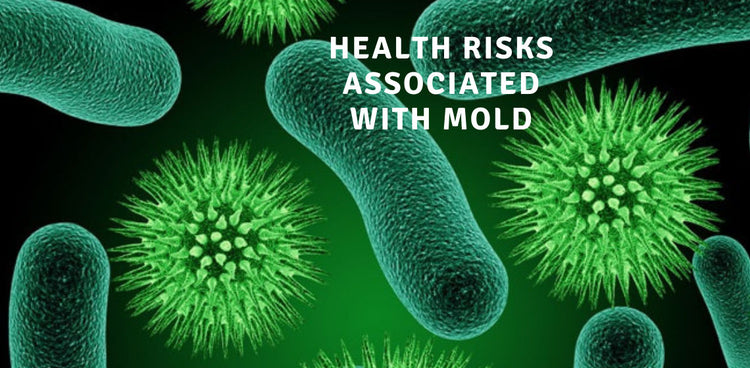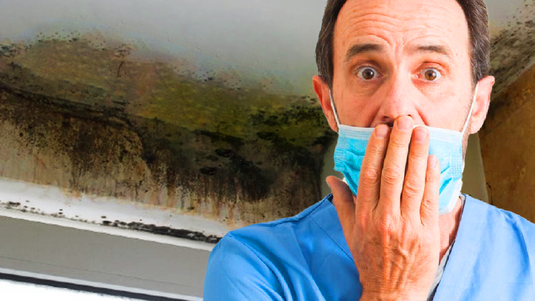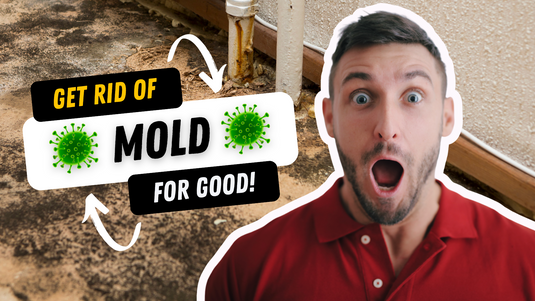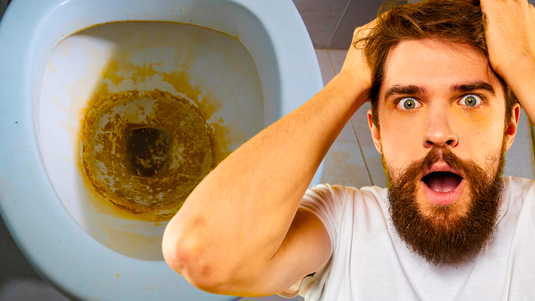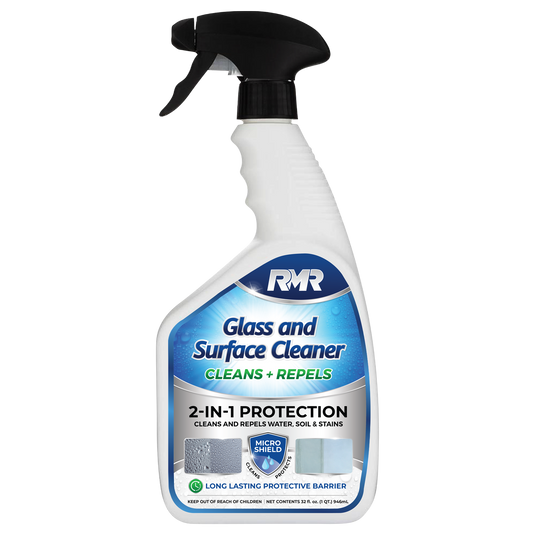Mold is the general term used for several different kinds of fungi. Most connotations associated with the word are not positive - damp basements, musty odors, water leaks, moldy carpets, poisonous mushrooms, and soggy drywall, to name a few. Mold spores are found literally everywhere in the world, even in the air we breathe, but moisture is required for an active growth to accumulate. It could form on visible surfaces or hidden away from view under carpets and in the walls.
Indoor mold is unpleasant to look at and doesn't smell great, but there are far more serious potential problems that can arise if the problem isn't remedied. Namely, it can cause a slew of health problems for the people who are exposed to it on a regular basis.
Infections from Mold
Respiratory infections are common when a person is regularly exposed to mold. While it has not been definitively proven to be true, it's believed spending time in moldy environments increases the risk of developing ailments such as bronchitis, pneumonia, thrush, and athlete's foot. The severity can vary depending on an individual's immune response, but the situation can become serious - and even life threatening - very quickly.
Certain individuals are more likely to develop a severe infection from constant exposure to mold. Infants, children, and the elderly are at risk due to their naturally weaker immune systems. Additionally, people with compromised immune responses are more likely to encounter problems than a healthy person.
Allergies and Asthma from Mold
With indoor environments, it can sometimes be difficult or even impossible to pinpoint a specific allergen that could be creating symptoms of respiratory illness and inflammation. Besides mold, the presence of other things like secondhand smoke, pet dander, and dust can have similar effects on various individuals. While a person suffering from allergies or asthma is not always an indicator of mold, it's worth taking note of if it happens.
The key factor is whether the asthma and allergy symptoms take place in a specific location. If the area is known to be damp and a person develops symptoms that they don't experience anywhere else, it may be time to take an environmental assessment. If it's determined that indoor mold is the cause of a developing or worsening condition, the person should be removed from the environment until the mold can be properly treated.
Symptoms of a mold allergy or mold-induced asthma are very similar to other cases with different triggers. Everyone reacts different to allergies, but the person may experience sneezing, nasal congestion, runny nose, itching, and puffy eyes. In more severe cases, there may be shortness of breath, wheezing, and coughing.
Sick Building Syndrome
Sick building syndrome is defined by the Environmental Protection Agency as a condition where occupants of a building experience negative health effects that appear to be linked to that particular location, but where no specific cause or illness can be pinpointed. This could include anything from headaches and fatigue to irritation of the eyes, skin, and throat. Typically, these symptoms appear to be associated with problems related to indoor air quality as a result of poor maintenance or insufficient ventilation.
The most common locations where mold can be an indoor contaminant is within heating ducts or anywhere else where moisture can stagnate and accumulate. However, there is always the possibility that the contaminants making the individual sick could be linked to other sources such as bacteria, fumes, chemicals, pesticides, and even bird droppings.
Toxic Mold Syndrome
The phrase "toxic mold syndrome" is more of a legal term than a medical one. Despite being unsightly, there isn't enough conclusive evidence to support the idea that black mold can cause humans to get sick. There is no way to really diagnose it, nor is there a specific set of symptoms associated with exposure. However, it's worth noting that people have been known to experience a myriad of illnesses and symptoms when they regularly spend time around areas plagued by black mold.
A word of caution: There are people who advertise themselves as being practitioners and experts who can treat and cure toxic mold disease - a condition that does not medically exist. They charge exorbitant fees to consult those who believe they have the sickness to advise them on various restrictive diets and supplements designed to "extract" mold from the human body. However, mold cannot be retained within any human organ. So if you feel black mold is making you sick and someone approaches you with any of these claims, be wary.
Pulmonary Hemorrhage
Perhaps the most compelling case that supports the argument of illness related to mold happened in the 1990s. During this time, an ailment that typically strikes only one in a million infants was affecting one in a thousand in Cleveland, Ohio, and killed almost a third of them. At first, experts couldn't pinpoint what was causing these children to develop pulmonary hemorrhage, or bleeding in the lungs. Some cases that didn't seem severe saw the infants dying within a week of seeing a doctor.
Investigators discovered that all of these cases hit on a side of town where low-income families lived, and where living spaces were not well maintained by landlords. More specifically, these residences were found to have toxic mold buildups in the walls and ceilings. Later, the U.S. Centers for Disease Control and Prevention (CDC) retracted these findings and marked the case as unsolved, citing a similar occurrence in Chicago that was not linked to mold exposure. Just the same, the presence of the mold is difficult to ignore.
Preventing Mold-Related Illness
The best way to avoid getting sick is to minimize the chance of a mold buildup in the first place. At its most basic, this means controlling moisture levels within the residence as much as possible. Keep an eye on places prone to water accumulation, and when moisture is present, remove as much as possible and check back regularly. If mold is found, contact a mold removal company to make sure it all gets properly removed.

